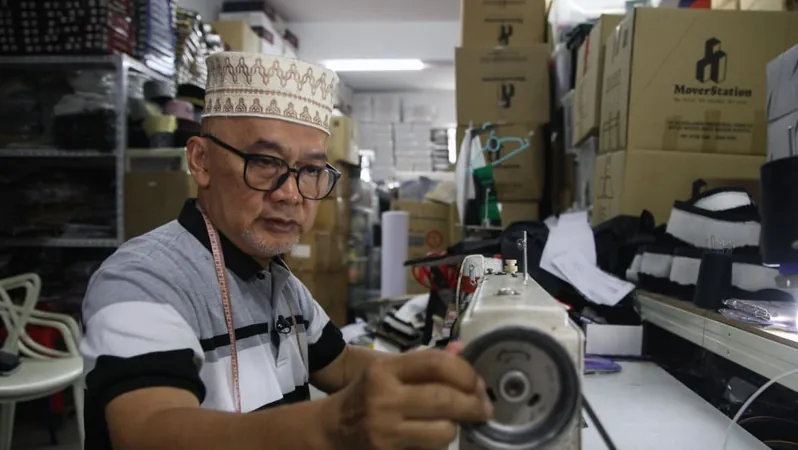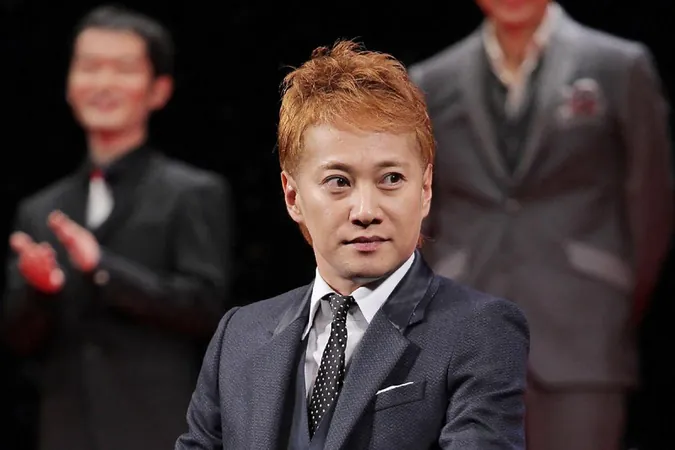
The Last Songkok Maker of Singapore: A Legacy at Risk of Vanishing
2025-03-30
Author: Ming
As I concluded an interview with 65-year-old songkok maker Abdul Wahab Abdullah, a customer walked into his warehouse in Bedok North, accompanied by his family—an event that underscored the rich history and tradition tied to this unique headgear.
The songkok, a traditional cap often crafted from felt or velvet, is predominantly worn by men in conjunction with Malay attire, especially during vital cultural events like Hari Raya and weddings. Abdul Wahab, a master of his craft, has been making songkoks in Singapore since he was just seven years old and is currently recognized as the city-state’s last remaining songkok maker.
Over recent months, Abdullah has shifted from a retail outlet to operating out of a warehouse, mainly due to rising operational costs. This decision reflects broader economic pressures affecting small businesses in Singapore. The customer, Mr. Muhammad Firdaus Muhammad Hairi, had made a 40-minute drive through the rain from Chua Chu Kang to place a custom order—a testament to the value he places on Abdul Wahab's craftsmanship. He could easily have chosen an off-the-shelf option or even an online purchase, but he opted for Abdul Wahab’s personalized service, a choice rooted in family tradition that dates back decades.
Mr. Firdaus fondly recalled how his father introduced him to Abdul Wahab in Geylang Serai. "His service, advice, and the unmatched quality of his work are what keep my family coming back," he said, revealing a battered box which held his wedding songkok, custom-ordered some 11 years ago. Sharing personal stories of lineage and special occasions, he symbolizes the importance of the songkok within familial ties and legacy.
Abdul Wahab’s journey with songkoks began under the guidance of his father, who emigrated from Java in 1917 and learned to sew songkoks, ultimately establishing a shop that has become a part of Singapore's cultural fabric. Starting at a young age, Abdul Wahab learned the art of songkok making, characterized by an intricate blend of skill, patience, and passion, making him the sole apprentice of his father among his siblings.
As he honed his craft, Abdul Wahab built a significant client base, producing approximately 2,000 songkoks each year, especially during Ramadan. The demand for his artisanal work has persisted through generations—many of his customers were initially served by his father.
However, as times have changed, so too have shopping habits. The rise of e-commerce and cross-border shopping has impacted Abdul Wahab's business. Younger generations are often less inclined to wear songkoks, a departure from tradition that worries him. "If you don't wear songkok now, your children will see and follow suit," he cautions, observing a gradual loss of cultural customs that many once held dear.
Despite contemplating retirement, Abdul Wahab feels an obligation to continue his work, emphasizing that the community still requires his skills. While his children have all pitched in at the warehouse and possess basic sewing abilities, only one of his sons has shown interest in carrying on the family legacy. Yet, with a stable career in law enforcement, the transition remains uncertain.
As Hari Raya approaches, Abdul Wahab's orders continue to trickle in, but he has recently suspended new orders due to an overwhelming backlog. While technological advancements have assisted in reaching customers across the globe—from Japan to Nigeria—the essence of his work lies within the community bonds he has nurtured through his art.
The fate of the songkok and its maker hangs precariously in the balance. Will future generations choose to carry the mantle of this finely-crafted headgear, or will the last songkok maker's legacy fade away with time? Only the community's appreciation for their cultural identity may hold the key to preserving this cherished tradition.



 Brasil (PT)
Brasil (PT)
 Canada (EN)
Canada (EN)
 Chile (ES)
Chile (ES)
 Česko (CS)
Česko (CS)
 대한민국 (KO)
대한민국 (KO)
 España (ES)
España (ES)
 France (FR)
France (FR)
 Hong Kong (EN)
Hong Kong (EN)
 Italia (IT)
Italia (IT)
 日本 (JA)
日本 (JA)
 Magyarország (HU)
Magyarország (HU)
 Norge (NO)
Norge (NO)
 Polska (PL)
Polska (PL)
 Schweiz (DE)
Schweiz (DE)
 Singapore (EN)
Singapore (EN)
 Sverige (SV)
Sverige (SV)
 Suomi (FI)
Suomi (FI)
 Türkiye (TR)
Türkiye (TR)
 الإمارات العربية المتحدة (AR)
الإمارات العربية المتحدة (AR)